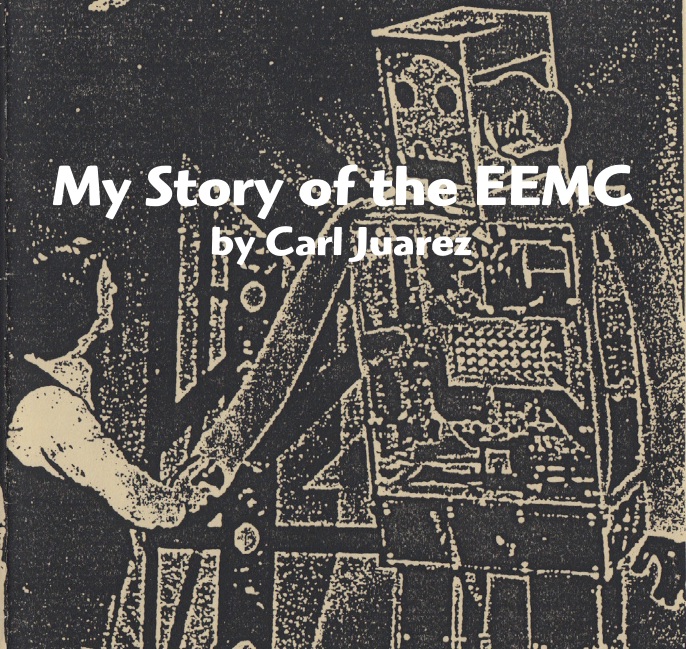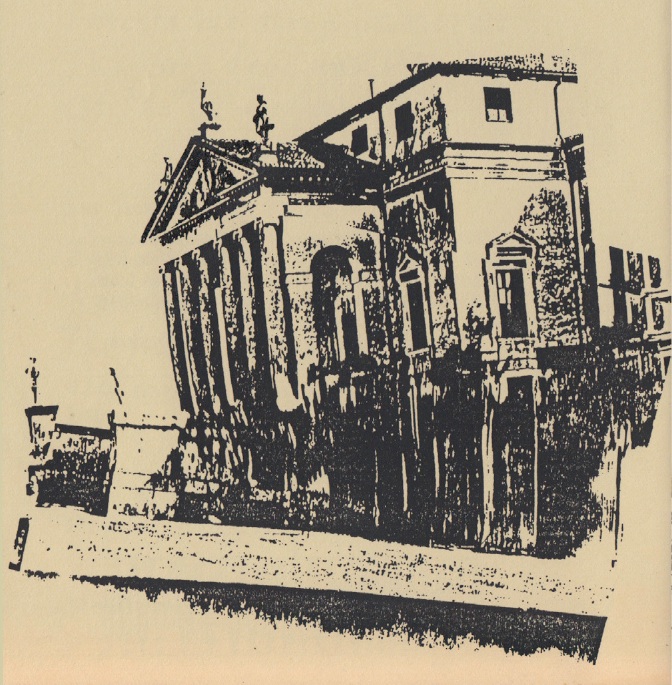Supplemental Notes on Switched-On Eugene [2018]
From My Story of the EEMC [2018], published as a supplement to the compilation Switched-On Eugene.

34 years is a long time, and even those of us with good memories may be excused some fuzziness in our recollections. These days it’s easy to overlook how unusual it was in a pre-disco, pre-Moby era to be interested in listening to electronic music, much less making it. Most of the real instruments were locked away in studios or academic facilities, and the few in private hands belonged to rich musicians and hobbyists, not many of which were in a small college town like Eugene.1
This meant that the folks you met who were into electronic music were like any other fringe community often eccentric, even obsessive, in the face of a world that barely acknowledged the existence of this music that was struggling to be born. I met one synthesist who lived in a rundown motel court bungalow, where the living room was stuffed with state-of-the-art synths and sequencers but as I discovered to my distress the toilet was a hole in the floor.
Still, change was coming, and quickly. The collective technophilic impulse that was driving the early hackers to develop the first personal computers was also pushing people like Ikutaro Kakehashi (founder of Roland/Boss) and Robert Moog to not only repurpose electronic circuitry to create the foundation for electronic music as we know it, but to make it affordable, on its way to becoming as ubiquitous as cellphones. The cultural wake-up call of punk and new wave music began incorporating academic influences like Alvin Lucier and Steve Reich, as refracted through the works of Brian Eno and European art rock, with a do-it-yourself approach where passion trumped poverty. Into this ferment was tossed the TASCAM Portastudio 4-track cassette recorder and its ilk, which at $2500 only cost as much as a used car, and the rest is history.
Brian Magill and I had kindled a high school acquaintance into a college collaboration at the University of Oregon in 1980 when I had inveigled him into facilitating the diversion of two “damn heavy” reel-to-reel recorders for the weekend from his student job at the Instructional Media Center to a quasi-apartment a few hundred yards up the street belonging to Reid Ertsgaard, a fellow student who had a foot-pump organ and a Fender Rhodes electric piano there. (We had been inspired by Robert Fripp’s music to attempt the two-recorders-one-tape version of the electronic audio loop, which allows a musician to interactively build up sounds into a self-sustaining audio structure.) That summer we sublet an apartment, and despite a distinct paucity of instruments we recorded “Throwing Up at the Pere Ubu Concert,” and I created the process piece later named “Music for Alien Encounter2” from electronic feedback and cumulative noise.
In the next few years I had disconnected from college and was trying to write and learn electric guitar, ultimately succeeding at neither. I was living in the basement at 1264 Pearl, Brian was living in the next apartment, and we were meeting and working on music with various folks, including in my case the Carrion Commandos. The punk/new wave influence of the popular music we liked had combined with the primitive electronic instruments and recording equipment to create a kind of techno-tribal northwest sound and a xerox-art esthetic that fit in with the zines of the day and showed up in our covers and posters.
The initial idea with the EEMC in 1984 was thinking that the people who read zines like Op and Option were more likely to buy a compilation of several artists than a solo release, and that there might be collective advantages to setting up a single point of distribution, mostly through mail order. My recall is vague, but aside from mutual friend Derryl Parsons I think Brian brought in Nathan Griffith, Peter Thomas, and Peter Nothnagle, the last of whom I knew from students of his in the Commandos, among others.
Although I was a co-founder and participated in the compilation Freefall [1985], alas the prospect of employment as a typesetter lured me to Seattle later that year and after I passed on to them the PO Box I’d maintained since ’78 I was much less central to the group. The others continued to toil, assembling an enviable range of artists and releases and selling them via mail order and local stores through the rest of the decade. I’m very glad something I helped create was able to do so much.
— Carl Juarez
Heurihermilab, October 2018
A brief note about my biography as printed in Switched-On Eugene:
I consider myself less an electric than an electronic guitarist, as my ability to play without effects or at least an amplifier is quite limited. I was not born in a lake in Washington but live near Lake Washington. I am aware of the existence of the year 2002. I started at the UO in 1978, not 1979. I had friends who lived in a house called Vatican II but did not myself live there. I worked on manuals for Aldus software, but quite a few other folks were involved.
In addition, this compilation features three pieces of my xerox art from the period, which appear on the CD tray packaging and album labels without attribution, acknowledgement or compensation. They are copyright © 1984; all rights reserved.

-
Seattle had a rarity in PASS, the Public Access Synthesizer Studio, which is where I mastered my EEMC release Collection Potentials: Confessions of a Mobile Intelligence Unit around October 1984. ↩
-
Audible at https://archive.org/details/nTopia ↩